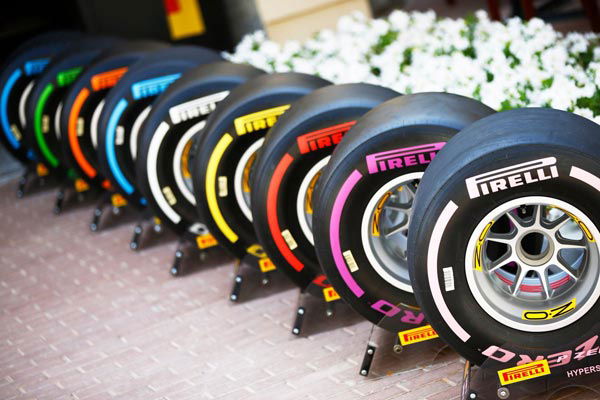The History of Formula One Tyres

Follow Us

via Imago
Pirelli
Every Formula One car has a need for tyres as it adds a crucial element to strategy. A car’s performance is directly proportionate to the type and compound of F1 tyres in use. Modern F1 cars may be considered technical masterpieces, but without the proper tyre compound, even the best car on the grid cannot stand a chance. In its nearly 70-year history, F1 tyres have undergone major changes. In fact, different manufacturers and tyre specifications have come in and out of the sport.
History
Until the late 1960s and early 1970s, normal grooved tyres were used in racing. However, teams and tyre makers soon made an important discovery that revolutionised racing. They realised that by running no tread patterns on dry weather tyres, the tyre-to-road grip could be maximised.
ADVERTISEMENT
Article continues below this ad
This went on for a really long time until the 1998 season. Formula 1 got rid of the ‘slicks’ and re-introduced ‘grooved’ tyres. The sole purpose of the move was to curb the increasing cornering speeds. Those grooved tyres had three parallel grooves in the front tyres and four parallel grooves in the rear tyres.
These longitudinal grooves needed to be at least 2.5mm deep and spaced 50mm apart. As a result, the tyre manufacturers and teams were faced with new challenges.
Manufacturers
From its inaugural season in 1950 until the 1960 season, F1 tyres were manufactured by 5-6 companies, Pirelli, Firestone, Dunlop, Englebert, Avon, and Continental. For the first three years, it was a battle between Pirelli, Dunlop and Englebert. Firestone joined the fray in 1952 but only for one season. Avon and Continental entered in 1954 but all three manufacturers were intermittent. Pirelli, Dunlop and Englebert dominated the proceedings until 1958.
From the 1959 Formula One season onwards until the next six years, Dunlop was the sole tyre manufacturer for Formula One racing except for a couple of teams using Goodyear from 1964 onwards. Then for almost two decades till the 1980s the tyre compounds were provided by Dunlop, Goodyear, and the returning Firestone.

via Imago
Goodyear
Dunlop disappeared completely in the 1971 Formula One season, with only Goodyear and Firestone as the suppliers. The duopoly continued until 1974 and the following year, Goodyear began to edge out Firestone.
Then it was Bridgestone and Michelin’s turn with the former dominating in the 1999 season. The latter entered the sport first in 1981 and again in 2001. They stuck around until Michelin pulled out after the 2006 season and the US GP debacle. Bridgestone enjoyed the monopoly until 2010. In 2011 till date, Pirelli have been the sole supplier.
ADVERTISEMENT
Article continues below this ad
F1 Tyre Compounds 2018 by Pirelli
In 2018, there were seven tyre compounds, not including the mandatory wet weather tyre treads. The hypersoft tyre was denoted by pink sidewall marking and was the fastest tyre of the lot. However, it was the least durable and wore out easily. The ultrasoft tyre was marked by a purple sidewall marking. The supersoft tyre was identified by a red sidewall marking. The soft compound tyres were known through a yellow sidewall marking. The medium compound tyres had a white sidewall marking. The hard compound tyre was identified by a blue sidewall marking. Finally, the super hard compound tyre had an orange sidewall marking. The hypersofts were the fastest tyres but the least durable. The superhards were the slowest but were long-lasting
Moving on to the Pirelli intermediate tyre, it was marked with a green sidewall band. These tyres were in operation for mixed conditions like drizzle, track drying out after rain etc. The Wet-weather tyre had blue sidewall marking with full tread patterns, necessary to expel standing water when racing in the wet.
ADVERTISEMENT
Article continues below this ad
Despite the development effort invested in aerodynamics, composite construction and engines it is not easy to forget that the nitrogen mixture filled tyres are still an F1 car’s biggest single performance variable and the only point of contact between car and track.

via Imago
All the ranges of Pirelli tyres
